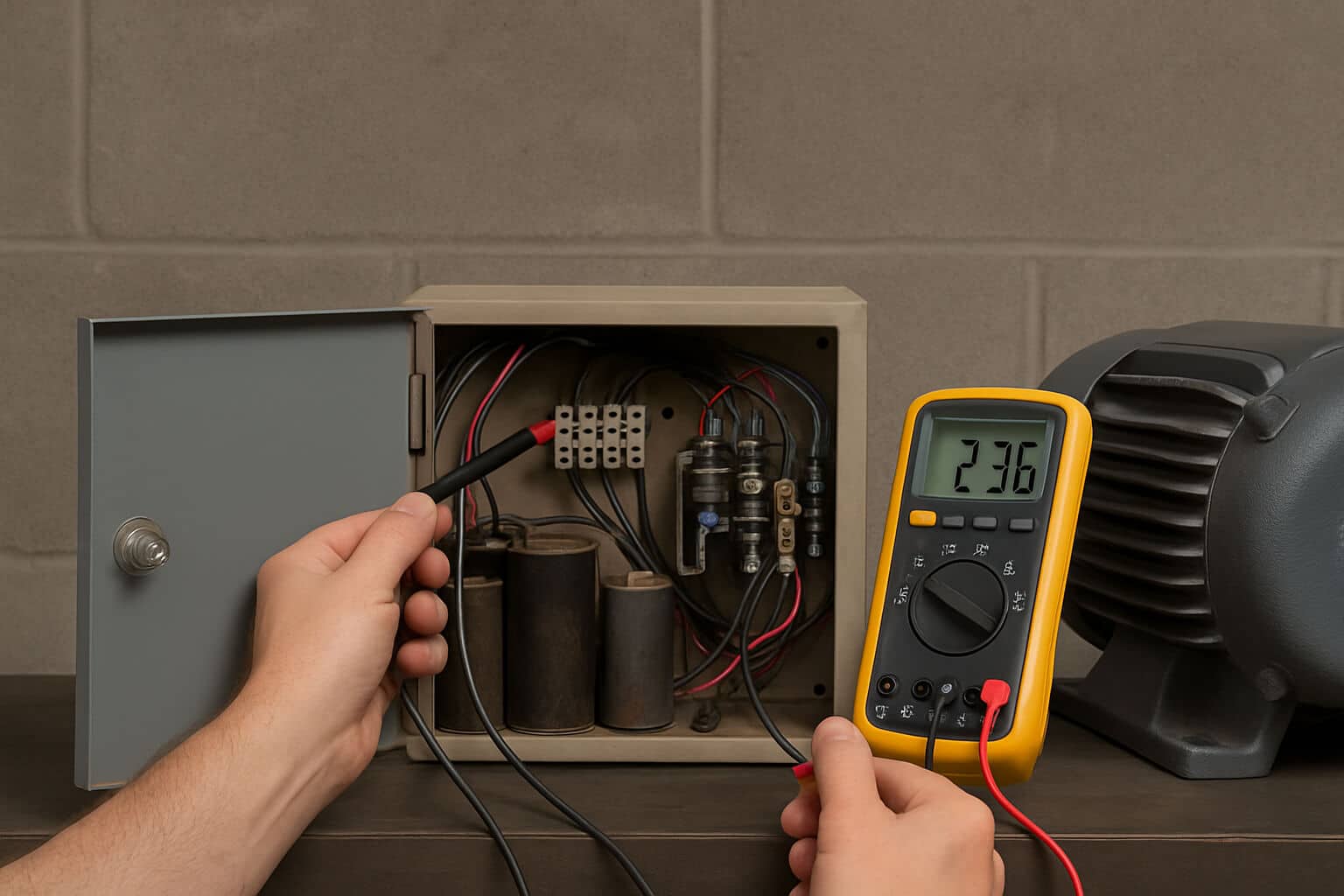When your equipment starts acting up, the phase converter is one of the first things you should check. It’s the heart of your power setup—and when it’s not working right, nothing else will.
Good news: you don’t need to be an electrician to run a few basic tests. Most of the time, a quick check with your eyes and a multimeter is all it takes to spot the issue.
1. Take a Look Inside
Turn off the power and open the converter panel. Now check for the obvious stuff:
- Burned wires
- Melted insulation
- Swollen or leaking capacitors
- Loose terminals or connections
If it smells like burnt plastic, trust your nose—something’s wrong. These signs usually show up before the converter completely fails, so catching them early can save your gear and your wallet.
2. Check the Voltage
Flip the power back on and grab your multimeter. Measure the voltage between the three legs: T1 to T2, T2 to T3, and T1 to T3.
You want the numbers to be close—within 10% of each other. If one leg is way off, your converter might not be generating balanced power, which puts stress on your machines and shortens their lifespan.
If your setup isn’t holding steady voltage, it might be time to look into more stable phase converters that are built for consistent performance.
3. Listen for Weird Sounds
A healthy rotary converter hums. That’s normal. But if you hear knocking, grinding, or anything sharp or loud, that’s a problem. Worn bearings or internal parts could be to blame.
4. Run It Under Load
Here’s where things get real. Power up the machine that’s connected to your converter. Watch what happens.
Does it start strong, or does the voltage dip and the motor lag?
If your converter struggles when the equipment turns on, it might be too small—or too old—for the job. That’s especially true with high-torque machines like fans, pumps, and compressors. These motors need serious startup power, and not every converter can keep up.
If you’re pushing your setup too hard, consider upgrading to one of our phase converters that are sized for real-world loads—not just ideal conditions.
5. Test the Capacitors
Capacitors don’t last forever. They wear out slowly, and when they do, things get sluggish. Starts take longer. Voltage drops. Your equipment feels “off.”
Use a multimeter with a capacitance setting. Check each capacitor against the rating printed on it. If the number’s low—or the casing is cracked or leaking—swap it out. A new capacitor is a cheap fix that can bring a sluggish converter back to life.
If you’re unsure which capacitor to buy or how to install it, don’t guess. Get support or consult your manual. Making the right call here can extend the life of your whole system.
6. Don’t Overlook the Rest
Sometimes, the converter isn’t the issue. Check your system:
- Are your machines grounded properly?
- Is the power supply stable?
- Are your motors in good shape?
- Are the temperatures extreme where the converter is installed?
Even a loose wire or corroded terminal somewhere else can look like a converter failure. It’s worth checking the whole picture. Sometimes the problem isn’t what you’re looking at—it’s what you’re not looking at.
7. Know When to Call Someone
If you’ve checked the basics and still can’t figure it out, don’t guess. Call an electrician or technician who’s familiar with these systems. One hour with a pro could save you days of frustration—or worse, damage to your equipment.
Keep Things Running
You don’t have to wait for a breakdown to test your phase converter. A few quick checks now and then can keep your whole setup running better and longer.
If your converter isn’t performing like it used to—or you’re outgrowing your current setup—take a look at our phase converters. We carry models built to handle serious loads, with clean, balanced power you can count on.
Need help choosing the right one? Just ask. We’re here to make sure you get the right power solution the first time.

